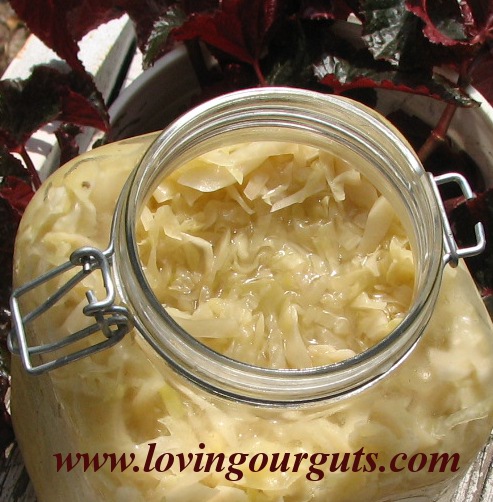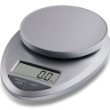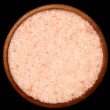Crispy Crunchy “SOUR”kraut (Sauerkraut)!
If you have read my post about Anaerobic Fermentation our GAPS Missing Piece you know how important the Pickl-It jar is proving to be in our GAPS healing journey. Some have asked me how I make sauerkraut so I’m going to share that recipe with you today. For this recipe to work you do need a special anaerobic fermenting jar or Fermenting Crock. I choose to use the Pickl-It jar because it is not prone to mold like crocks can be and because if I do get mold in it I can easily replace the non-glass pieces and keep most of my investment. I do not know of any other jar that works to keep oxygen out and yet allow for easy off gassing like the Pickl-It does. I have seen photos of browning foods in mason jars with various air locks on the top that prove that they are not actually air tight so I personally will not be trying to use one of those.
Fall is the perfect time to be making your years supply of sauerkraut. Your basement should be cooling off and cabbage is rolling in at the farmers markets. It would be ideal to make up your years supply at once and then eat from it for the rest of the year with it getting better and better as time goes on. Sauerkraut in an anaerobic vessel will keep for a year or more in a temperature controlled environment. (Not too hot, not too cold, like a root cellar). But that is a lot of work all at once too so instead I tend to stagger it. My current goal is to make 5-6 L every month and see how we do with that. We do love eating our kraut and it is a powerhouse for improving digestion and health in general but we also get tired of it at times and like to eat other things.
Just today I opened up the Sauerkraut I made 10 weeks ago. My first thought when I tasted it was “Wow is this SOUR!” Not sure what I did differently this time but my last batch was not so sour. Based on my yogurt experiments I have reason to believe that more sour means more LAB’s so I take it as a good sign that my Kraut was very happy this time. I’m so excited about having all of this kraut ready for us and more on the way. There is a good reason why the GAPS book emphasizes it as a very healing food. Sauerkraut is a very complex ferment that will benefit your digestion in several ways. First it is made of cabbage and cabbage contains components that stimulate bile flow. It is sour which means it is acidic. That works together with your own stomach acid to more effectively digest protein foods. It is full of lactic acid bacteria (LAB’s) that help to bolster your guts own beneficial bacteria and fight the pathogenic ones. Properly fermented sauerkraut is full of enzymes that help to directly digest your food for you. It is also full of vitamin C. It used to be taken on sea journeys to help prevent scurvy. Those of us on the Low Oxalate Diet need to be careful about vitamin C supplements so foods rich in vitamin c are especially important in our diets. Every little bit adds up.
Sauerkraut in the Pickl-It Jar
You will need
- Pickl-It Jar of any size, I prefer a 3L.
- Large Bowl(s) for holding shredded cabbage
- Dunk’r 1-5 depending on the size of your jar (optional)
- Pounder a French Rolling Pin works well
- Mandolin I have one like this one.Kyocera Double-edged Slicer With Guard, Black but I suspect there are better ones.
- Cutting Board Bamboo Cutting Board
- Scale This one is similar to mine Digital Kitchen Scale
- Sharp Chef’s Knife I wish this was my knife. You do want one this size. Henckels Chef’s Knife
- Cabbage Local Organic if you can find it. Local matters most.
- Finely Ground Salt This is a really good choice. It is unrefined, not wet (could harbor mold) and ground finely to easily dissolve Himalayan Pink Salt
- First cut the cabbage into wedges using your chefs knife and remove the core. You can make 4-8 wedges depending on the size of your head.
- Next weigh your cabbage. I like to do this at this point so that I will know how much salt to measure out and I can add the salt to the cabbage as I shred it. I find that about 2 lbs of cabbage fits into 1L of space so depending on the size jar you are wanting to fill you can judge how much cabbage you need. Take into account the head space needed in the jar. I reduce my cabbage weight by 1/2-1 lb depending on how big a jar it is. (more for bigger jars). You want to fill the jar with cabbage to just 1 inch below the shoulder. For example, I put about 5 lbs of cabbage in a 3L Pickl-It jar.
- Next weigh your salt. Don’t forget to convert your scale to weighing grams and zero out your bowl for measuring the salt. You want 19 grams of salt per 3 lbs of cabbage. For that 5 lbs of cabbage I would measure out 32 grams of salt
- Next begin to shred your cabbage into your large bowl using a mandoline. It is important that you slice the cabbage very evenly and thinly so that it will ferment evenly. Be very careful with the mandoline! It is very easy to cut yourself. Blood and cabbage do not mix.

- Stop occasionally to sprinkle some of your measured salt onto the cabbage that you have shredded. You want all of the cabbage to come in contact with some salt so I like to salt it as I go along and then mix it a bit once I am done shredding.
- Set the shredded, salted cabbage aside for at least 20 min, longer is fine. It will begin to soften some and weep liquid while it is resting like this. The longer you can let that process go the easier your next step will be.
- Now pack the cabbage into the Pickl-It Jar.
- Put it into the jar in layers. Pack those layers down firmly using your pounder as you go along. You will be amazed at how much it will compact. Fill it just to 1 inch lower than the shoulder of the jar. (No less than 75% full.) In the early stages of fermenting sauerkraut can expand and bubble an amazing amount and you don’t want that liquid to come out of the air lock. You want your brine to be right up to the shoulder but the solids about an inch lower. Don’t despair if your cabbage did not create that much brine. I have a solution for that coming up.
- Pour any liquid and salt that is remaining in your bowl into the jar.
- Add in the dunk’r (s). Generally you can fit one in the smaller jars and then 2 in a 2L, 3 in a 3L and so on. Go ahead and push down on that dunk’r and see how much liquid comes out of the kraut. The dunk’r is not strictly necessary. It helps to hold your cabbage under the brine. If your cabbage is above the brine it will get soft and not ferment evenly but it will not get moldy or rot in a pickl-it jar since the jar excludes oxygen.
- Assemble the air lock and add it to the jar. Don’t forget to fill the air lock with water!
- After 24 hours check the brine level. Lots of liquid should have come out of the cabbage in that time. If there is less than 1 inch of brine over cabbage make up a brine to add. 19g of salt per 4 cups of filtered water is your formula for making brine. I often push my cabbage back under the brine a time or two in the early days of fermenting (yes I open the jar, it is ok because at that stage the fermenting process is creating so much gas that it easily pushes any oxygen back out of the jar quickly).
Let it sit out in a room that is in the low 70’s for 10 days-2 weeks. You will need to move it sooner if your room is much hotter. Be sure to wrap your jar in a towel or something to protect it from the light or some of the processes will be harmed (the ones that make enzymes and vitamin C to name 2). Once it stops bubbling actively you can move it to a cooler spot. Check it daily once you get to one week on the shelf so that you can move it at the right time. That may be your basement in the winter, a root cellar or your refrigerator. Kraut prefers to be at ground temperature 50-55 degrees, while it is doing most of it’s fermenting. Refrigerators are much cooler than that so they may slow the process a bit but that is better than leaving it at room temperature where it can over ferment. If your home is warmer than 55 the sauerkraut will not progress through it’s stages of fermenting any faster but it will use up all of it’s food in an early stage and not have any left to finish the job. This will result in your bacteria dying and never creating that final product you are waiting for. (It may be full of aldehyde and histamines that are created early in the fermenting but destroyed at later stages and will be missing the enzymes and vitamin c that are produced late.)
The owner of the Pickl-It Jar business, suggests that you taste your sauerkraut after 8 total weeks and if still tastes of salt or cabbage let it keep going. Even after it is ready to eat, it is best to keep the air lock on for 5 months since the kraut continues to ferment and change over that time. You don’t want those gases it creates (carbon dioxide, sufur and others) to be trapped in the jar harming your enzymes (see “Why I Won’t Ferment Without a Separate Air Lock Part 1” for more about this issue) and creating off flavors.
Once the sauerkraut is finished it continues to be imperative to protect it from oxygen. You might ask “how can I do this and still eat it?” There are two things you can do. First only open it when you want to eat it. Try to not “mess with it” too much. Then store it is an air tight jar, like a Fido jar, that is at least half full of food (3/4 is better). This limits how much oxygen can be in the jar and come into contact with the food at any one time. The LAB’s do have a limited ability to consume oxygen and eliminate it from their space so keeping the head space in the jar limited will protect your ferments. You might ask “if it can consume oxygen why not just use a mason jar? Not all bacteria like oxygen and they have a very limited ability to consume it. If you use a lid that lets in oxygen (like a mason jar lid) or too much air space in your Fido jar, you will overwhelm the LAB’s ability to consume the oxygen and risk killing off the more sensitive bacteria or worse causing spoilage. Finding that balance where you can get the most LAB’s while also consuming the fermented food is what you are trying to do.
Please do not be overwhelmed by all of the steps in this process! I wanted to be thorough so that you can be successful right from the start. If you are more of a visual learner go check out this video on how to make Sauerkraut in a Pickl-It Jar.
Shared at The Liberated Kitchen’s GAPS Friendly Fridays #15
Many of my blog posts contain affiliate links. Purchasing through an affiliate link allows me to keep blogging and sharing what I learn with you. It is a bit like leaving a tip for service and is very much appreciated. Thank You! -PattyLA


50 Comments
Trackbacks/Pingbacks
- The Great Yogurt Experiement | Loving Our Guts - [...] jar this past spring I have been using it to make various fermented foods like Water Kefir and Sauerkraut. …
- Fermentation Friday: Probiotic Pills vs Fermented Food « Pickle Me Too - [...] from Loving Our Guts shares how she makes sauerkraut: Crispy Crunchy Sauerkraut. This is how I make my sauerkraut now. …
- Linky Love Friday, erm… Saturday 10/26 : - [...] Our Guts shares her recipe for fermented sauerkraut. I love [...]
- Fermenting in Pickl-It Jars - [...] daughter’s face. I now know it was the histamines in the kraut to which she was reacting. Our Pickl-It …
- Kraut Juice | Loving Our Guts - [...] of the most frustrating things about GAPS intro is all the sauerkraut juice you need! Where is that juice …























Patty, how about this idea. The food saver jar attachment - you know, suck the air out of a mason jar. I think it’s in your pinterest of using this jar attachment to help cut lettuce keep a week. Would it work to make your sk oxygen free - you’d just have to turn it on again after each use, which might be a pain.
Well the sauerkraut is generating a gas so that wouldn’t really work until the kraut is more than 5 months old and not generating any more gas. The gas will exert outward pressure and easily break the seal pretty quickly.
A page on the Pickl-It site recommends storing the finished kraut in the jar it was fermented in, and not transferring to another jar:
http://www.pickl-it.com/community/#/discussion/188/are-the-pickl-it-jars-also-intended-for-storages/p1
Correct! Store it in that jar until the jar is less than half full. At that point it is best to move it to another smaller jar unless you are ready to finish up the whole batch. Another option is to move it to smaller jars at the point when you move it into the fridge. It is still a very active ferment at that point and will do just fine moving. This option is actually ideal since you get the benefits of multiple microbes from multiple heads of cabbage but then move it while the ferment is still very active and potentially never have to move it again to a smaller jar depending on how big a serving you do at one time.
Excellent, thanks for the answer Patty. After reading your article and others about 5 times, I think I’ve finally got a good sense of the progression and the operation. I’m headed to the kitchen to slice up and pack my first batch now.
Hello PattyLA. All seems to be going fine with my sauerkraut, except for the airlock when I moved my batch to the refrigerator. The fridge evaporates the water out of the air lock in a big hurry, like less than 24 hours. So not knowing what to do, I replaced the air lock with the Plug’r. I see here on your blog that you recommend the air lock during the 8 weeks in the fridge. I’ll go back and put the air lock in, but filling up the air lock every day for 8 weeks is not terribly workable for me. I go out of town with my work frequently, and I won’t be around to refill it daily. The Plug’r will have to go in while I’m away.
That is a problem in some fridges. Get some food grade glycerine and replace the water in the airlock with a mixture of half glycerine and half water. That won’t evaporate nearly as quickly.
Terrific, thanks for the tip. I’ll give that a go.
Is there something else we can use to do the job of the Dunk’r? I’ve got Pickit’s, but no Dunk’r.
I have used a 4 oz jelly jar. It is too big to get into the corners but it can work to keep stuff down. It is not technically necessary but the stuff sticking above the brine will not ferment evenly. It won’t spoil either though, in a pickl-it.
The pickl-it dunkers were so expensive, I went out and bought glass candle holders (the flats ones) for $1 at Walmart that worked better than the dunker because it was a little larger and still fit. But like the pickl-it dunker, it has to be small enough to fit in the mouth of the jar, so it does not cover the entire surface of the jar itself. Small shreds of your veggies can still float up around the edges. I ended up buying a 3 pack of plastic mesh dehydrator trays for $5, traced the base of my pickl-it jars, and cut them to fit. It holds down every bit of the ferment perfectly. If you don’t want to use plastic, the candle holders are a great glass alternative. I’ve also read that you can use a large cabbage leaf and tuck it down the sides to hold it in place.
Thanks for the ideas Teresa. Candle holders can be made from leaded glass so I wouldn’t use those on food. And I wouldn’t use plastic in contact with food, esp a highly acidic food like a ferment. I have discovered that the lids to the smallest size fido jars fit inside and make a great weight and are bigger than the dunkr. Also covering the surface with a cabbage leaf and then weighing the leaf down works however gasses get trapped under the leaf and it will heave. Of course with an airlock jar like a pickl-it you don’t have to worry about mold on your ferment even if it isn’t weighed down however you may have problems with the top cabbage not fermenting evenly if it is up above the brine.
I started my first batch of kraut three days ago, before I found your video. I sliced the cabbage by hand. After watching your video I realized I had not sliced it near thin enough. After 24 hrs the brine came just to the level of the cabbage, so I added brine. Today, I pulled the towel back, pushed everything down and added a bit more brine. I noticed that a few spots toward the middle of the jar had turned slightly brown. Is this color change a sign that something did not go right? Thank you so much for all the information you have provided! Heather
Hi Heather,
If the cabbage is turning brown that means it is in contact with oxygen. What sort of container are you making it in? I can only recommend a harsch style crock with a water sealed lid or a Pickl-It Jar with the air lock. Those are the only containers that I know of at this time that will work correctly to protect your food from oxygen and allow the gasses produced to easily escape.
I am using a 3L pickl-it jar and I filled it with 5lbs of cabbage. I pulled it out tonight and pushed everything down. I didn’t see the brown color tonight. I guess I will just wait and see. At the end of the 10 - 12 weeks, what will be my best indicators if something goes wrong? And thanks again for all your help!
Ok I wasn’t sure since you said you pulled back the towel to check on it. When it is done it will taste sour and crunchy and not salty or like cabbage. If it still tastes salty or like cabbage it isn’t done. If it is mushy then you know you did something wrong. It won’t be quite as crunchy as fresh cabbage but it will not be mushy or soft and it will not be brown. The color does mellow somewhat over the fermenting time but when I used to make my sauerkraut in mason jars it would turn brown from the top down and get quite soft over time.
it’s been about 9 wks that my kraut has been in the pickl it jar in the fridge and Im going to taste it! If it is good can i put the little air plug thing on it or do I have the keep the plastic thing with the water on it. just wondering.
Hi Caroline, It is unlikely that it will be ready at 9 weeks unless you used a starter culture. If you can taste salt or cabbage it isn’t ready yet. You need to keep the air lock in I have found. I think that is especially true if you don’t plan to eat it up right away. I ruined some kraut by replacing the lid with a solid lid at the 12 week mark and then not eating it for about 3 months (I had made several jars all at once). It turned brown and mushy. Broke my heart to toss 3L of kraut.
Broke my heart to toss 3L of kraut.
Hi Patty,
I read on the Pickl-it Sauerkraut Tips article to use 3 Tb salt per 5 lb. of cabbage, however, in the Pickl-it Brine Recommendations article it says use 22 grams of salt per 5 lb. of cabbage (I understand this is the newest recommended ratio?). My problem is that I weighed 22 grams of fine grind Himalayan sea salt and it only measured out to just under 4 tsp. of salt, definitely not close to 3 Tb. Which amount of salt should I use, the 4 tsp. (22 grams) or 3 Tb? I am asking you because I noticed Kathleen on the Pickl-it website does often replies several months after a question has been asked. Or should I stick with the 32 grams salt per 5 lb. cabbage as listed in this recipe?
My other question is that in using the mandolin to slice cabbage, we are supposed to slice on the “edge”, not the flat surface, right? But once I make several slices, that “edge” is now a flat surface. Do I keep rotating my piece of cabbage so I am always cutting on an “edge”? Also, there seemed to be a lot of waste as the cabbage would break into chunks that would not slice after awhile. Should these chunks be chopped as finely as possible with a knife?
Thank you so much for your awesome help! You are a life saver.
Hi Gretchen,
You are right, she does not update things there very often. The measurements I have in this recipe are from her latest salt recommendations so go with that. It works great for me.
So yes the goal is long very thin strips of cabbage. However you have to twist the cabbage to make that work is great. I do often finely slice anything that I can’t make work on the mandoline and mix that in too. Some discard it but I’m too cheap for that. 😉
Is that clear?
Patty
Sounds good, thank you!
My kraut has been in the large pkl it jar for almost 17 wks. I dont have the really small jars. I have the large and medium size jars. I dont want to eat too much and then get the level lowered in the big jar which I think is like a half gal size or something close. I didnt know if I could put some in a small mason jar and put a regular lid on it. Its been in my fridge all this time.
Hi Caroline,
Nope don’t put it in a mason jar but do go to the store and purchase some smaller fido jars to put it in. I’m not sure what you mean by large. Perhaps 3L? The biggest jar is the 5L which is more than a gallon. The lids are interchangeable for all the jars except the two tiny sizes that can be difficult to find and are obviously a different size if you compare them. In fact I have used the glass lids from the smallest jars as dunkers in my big jars when I needed more.
Hi Patty,
Nourishing Treasures argues that the LAB count is higher if sauerkraut is left at room temperature 4 weeks, and other vegetable ferments for 2 weeks. What are your thoughts on this? Thank you for being so kind and helpful!
Well there is more to ferments than simple counts of bacteria. The kind of bacteria matters, as does the presence or absence of enzymes and histamines. Histamines are still present in kraut till 8-12 weeks in my experience. You can’t really speed up the process by making it hotter, you can just over ferment it. Over fermenting means that all the food for the cabbage will be consumed before it gets to the later stages of fermentation. Once the food is all consumed the bacteria will die off since they will have nothing more to eat.
If I recall she was fermenting on the counter without an air lock. My experiments with yogurt lead me to believe that using a jar without an air lock eventually kills off the lab’s so the lower counts of bacteria with longer fermenting makes complete sense to me with the method that she is using.
Sauerkraut is traditionally a way to preserve the harvest long term. It wasn’t ever meant to be made year round since cabbage as a rule is seasonally available in the fall. Of course with global shipping we have lost our sense of what foods are available in what season.
Oh, I am definitely with you on the 10-12 weeks total! I was just wondering about doing 4 weeks at room temp and then the rest in cold storage versus 10 days - 2 weeks at room temp and then cold storage.
Her experiment was on the counter and some of the jars did not have airlocks, but others did. She reported higher LAB count, not lower, for the jars with airlocks that spent a longer 4 week period at room temp before transferring to cold storage. I’m totally on board with using an airlock. After reading your posts and Kerry Ann’s at Intentionally Domestic, I quickly switched to only fermenting in Pickl-It and Boss Pickler jars. My confusion is over how long to leave it at room temp to maximize benefits. Are you saying that if it is left at room temp at 68-72 F for 4 weeks, that it is too warm for too long and the bacteria will consume all the food too early for them to live 10-12 weeks to finish out the fermentation cycles to produce enzymes and destroy the histamines? I wish she would have done bacteria counts and enzyme and histamine analysis at 10-12 weeks. I understand a root cellar or basement at 50-55 F would be ideal, but I don’t have that option so I’m trying to figure out the best way to proceed.
I understand a root cellar or basement at 50-55 F would be ideal, but I don’t have that option so I’m trying to figure out the best way to proceed.
Ok. Again since kraut was traditionally done in a much cooler environment I would be worried about over fermenting. Cabbage isn’t really a high sugar food and if done properly can be stored for a year or more. (we are finishing up the kraut I made last winter now.) I have not read any of the expensive and extensive books on the science of fermentation. I rely on others who have read the research for my information on these foods. They tell me that once the fermentation slows it should be moved to cold storage and that is usually at about a week. A non-scientist looking through a microscope and saying that she sees more bacteria if you let it ferment for longer at room temp does not convince me that I should change how I’m doing things. She has no idea what sort of bacteria she is looking at she also has not measured things like enzymes and histamines in her kraut. She doesn’t know what is going on at 16 weeks or 24 weeks which matters if you make kraut as I do and as traditional peoples did, in the fall to last a long time. I care as much about the complexity of bacteria in my fermented foods as I do about simple counts. That is why on GAPS it is emphasized to buy probiotics with a variety of strains, not just a number of cells.
It is best if your option is room temp or a fridge to put it in the fridge. Pick the warmest part of the fridge for storage of it and that will be good enough.
Hi Patty,
Thank you for such a thorough response. That clears it up for me. I appreciate your expertise and knowledge, especially as it pertains to GAPS, which is why I chose to consult you rather than her. Thank you very much!!
One more question: I see the airlock needs to be left in place in cold storage for 5 months for sauerkraut, but when can the airlock be switched out for a plug’R or Fido lid in cold storage for other (less active?) ferments? Thank you!
Once the ferment has slowed down you can usually replace the air lock. This is especially true if you are consuming the ferment daily or every couple of days since you will be opening the jar at that point and letting out the gasses before they have a chance to build up.
What if you live in a city and have chlorinated water?? - is this a problem? I can get water from the fridge filter also but it is still chlorinated.
Thanks!
At the very least you should let your water sit out for 24 hours to let the chlorine evaporate. Better would be to get a good water filter to filter your tap water. You can also purchase spring water to use in your ferments.
Hi! I drink the juice and don’t eat the cabbage. Does anybody know if instead of cutting up more cabbage and making a whole new batch of sauerkraut, can you just refill with new water to make more sauerkraut juice?
That won’t work but you can make my kraut juice to get more juice from less cabbage. http://www.lovingourguts.com/kraut-juice/ You can also juice the kraut to get more out of it.
Hi Patty,
Do you have any advice for how to best move sauerkraut? I have several batches that are done with 12 weeks, and now we need to move from Washington to Arkansas. I thought keeping them in a cooler with ice would be too cold and kill the microbes so I don’t know what to do. I’m afraid of undoing all my hard work to get the sauerkraut to this point.
Thank you!
Cold won’t kill them. Even freezing leaves most of the microbes alive. Put them in a cooler with ice and don’t worry about it.
Do you think the jars can handle the pressure change of flying, or do they need to be transported by driving? Thank you.
I’m sorry I don’t know what would happen if you flew with one of these jars.
Patty, I have been learning so much from your blog. Thank you. I am wanting to put away lots of kraut this fall for the year. You mentioned that you prefer the 3L. I’m wondering if it would be beneficial to use a 5L…any reasons you stick with the 3L? Thanks.
I do use 5L jars some but the don’t fit in my fridge very well and I find the 3L just easier to use. There is no reason to use whatever size other than logistics though. They all work.
I tried making sauerkraut in my 3lt pickl-it jar Sunday night. I followed the directions and by the next day there was plenty of brine. The air lock had some small bubbles stuck to it’s side but it never actively bubbled as I would define active. Should I be able to see the air lock bobbing or something? If so, what could have gone wrong? It is a bit cooler here than usual. Will this batch need to be thrown away? Thanks for any help you can give.
If you have a 3 part air lock the middle part will float up when it is active. Otherwise just seeing any bubbles in the 2 part means that it is active. This won’t be like carbonation.
Sorry for all the newbie questions! So I do have the three way airlock. The air lock appeared to have lost a bit of water so I added some more. It was not empty, just a bit low. When that didn’t have bubbles in it the next day. I decided to taste the kraut and see what was going on. This was at the six day mark. When I took the towel off the jar, color was great but it looked as if all the brine had disappeared. The kraut was cover by a good inch or two of brine when I started. The temps have been low 70’s the whole time. Yeah polar vortex. I am sure that it had not leaked out of the jar. 1) Should the brine level drop? I tasted the kraut. It was crunchy and tasted like kraut, not salt or cabbage. I pushed the kraut down and there was just enough brine to barely cover the kraut. I replaced the airlock, wrapped the jar back up in the towel and placed it all in the fridge. 2) Should there be more brine when I push the kraut down. Thank you so much for all your help!
You really won’t see bubbles in the air lock. You can just see the middle part floating sometimes. If the brine isn’t adequate you can always add more. It should be 1 inch over the cabbage when it is pushed all the way down.
Just EXCELLENT! I just found you through Wardeh’s FB posting and am so very impressed with your writing and process. Perhaps we’ll get to connect in the future. I am a Recipe Counselor for the GAPS Diet, as well as a few other healing diets, but mostly GAPS and our family has been going strong, healing, but still needing the diet for almost 4 years. My blog is Eat Beautiful and I just started a FB page too. Lots of love and thanks to you for your wonderful articles and the resources your are providing. They are among the best I’ve seen. Warmly, Megan
Hello,
Have you read this?
http://www.drlwilson.com/articles/FERMENTS.htm
Interesting. Anaerobic fermentation done for long enough will prevent the aldehyde issue. Anything pathogenic will also become obvious with a long fermentation time. The rest of it is subjective. Fermented foods are never supposed to be the bulk of what you consume. They should be served in condiment portions.
Thank you, Patty, for all this great information!
I’m trying to get this to work and I’m losing Batch #4. The learning curve seems steep for me, sadly. If I wasn’t so bound and determined to get this to work, I’d be seriously thinking about throwing in the towel.
Batch #1 was green cabbage but just in a quart jar on the counter and not airtight.
#2 I waited to purchase Pickle-Pro tops and airlocks and I went at it again. I think it was green cabbage again and I didn’t realize I’d missed the pounding step and everything floated and I needed two quart jars. Fail.
#3 I tried purple cabbage and I got a whole head in one jar with a good amount of juice! Yea!!! This time, though, I was excited about the bubbles (or lack thereof) and tipped it too much to see if they would float up. I was thinking they were supposed to be more like carbonation – more active. I also made the mistake of setting it in the sun to hopefully speed up the process. It did, for the day, and then died.
#4 was purple cabbage again and must’ve been a bigger head because I couldn’t get it all in one jar. I tried two. The quart jar must’ve been too full. Juice seeped out from between the jar and lid, not through the airlock. The smaller jar I had to add water to because there wasn’t enough juice for both jars and it didn’t really do anything.
On all of these things began to turn brown which I took as a bad sign. I’m gathering that I’ll have to try something different again. The Pickle-Pro tops seem to work for some people – but I’m not sure they’re the ones leaving the ferments as long. I can’t get mine to last even a week. I was wondering if my ONE TABLESPOON of salt was too much and killed the ferment but it seems you use even more.
-I think I’ll have to buy Pickl-Its and Fido jars for the later stages.
-Can I use clean (and boiled) rocks to weight stuff down? I’ve done that a couple of times.
-Do you think the salt is an issue? It’s good sea salt – non-processed.
I bought the book: The 30 Day Heartburn Solution: A 3-Step Nutrition Program to Stop Acid Reflux Without Drugs and just this part is taking way more than 30 days to figure out by itself. Goat milk is an hour away. Some bone broth is in the freezer. But this is not a 30-day thing in my book.
Any thoughts? Thank you!
Unfortunately nothing you do will make a lid on a mason jar work. You need to invest in a truly anaerobic jar like a probiotic jar or pickil-it jar or a crock with a water seal.